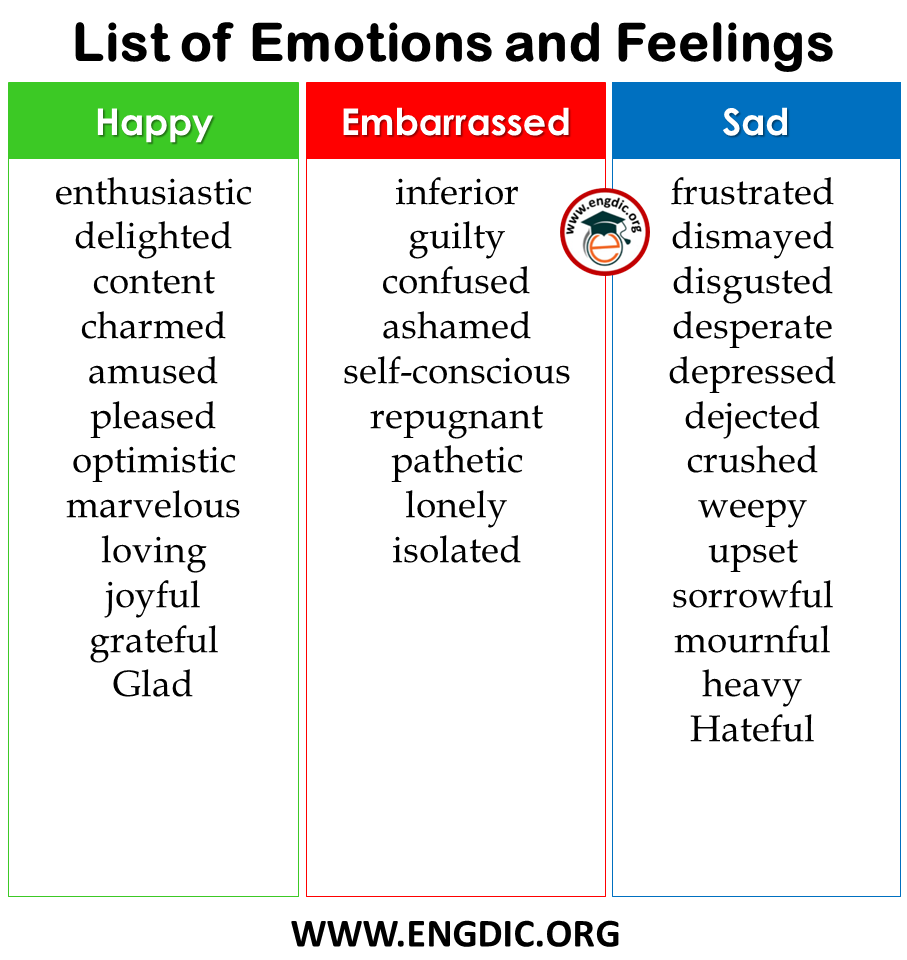
To go further learning about emotions, make sure you join a Grow U class where you’ll experience a simplified version of Six Seconds’ methods for practicing emotional intelligence - being smarter with feeling. The Emotion Wheel will help you explore the meaning of the most essential feelings list, and a logic of how to make sense of feelings. In addition to a variety of emotion cards (see the bottom of this page), we have feeling lists in 18 languages, plus our favorite emotions list called The Emotoscope which helps you scope out feelings (see the form to the right).īelow, you can read more about our interactive Emotion Wheel with the Plutchik Model of Emotions. One of the first things English language students learn is.

One of the resources on the page goes into detail on the difference between emotions and feelings, and we have a fantastic video that goes in depth on emotions, feelings and moods. Teach vocabulary to do with feelings with this useful list of feelings and emotions in English.

The short answer is: Emotions come first, then feelings come after as the emotion chemicals go to work in our bodies. There are some 3000 words for feelings… how many do you know and use? As you’ll see in these resources, accurately naming feelings is key to managing emotions.

“Emotional literacy” is the skills we use to figure out emotions it helps us make sense of and communicate emotions… it starts with identifying and understanding feelings. “Literacy” is the skill we use to read and write it helps us make meaning from words and communicate… it starts with identifying and understanding sounds and words.


 0 kommentar(er)
0 kommentar(er)
